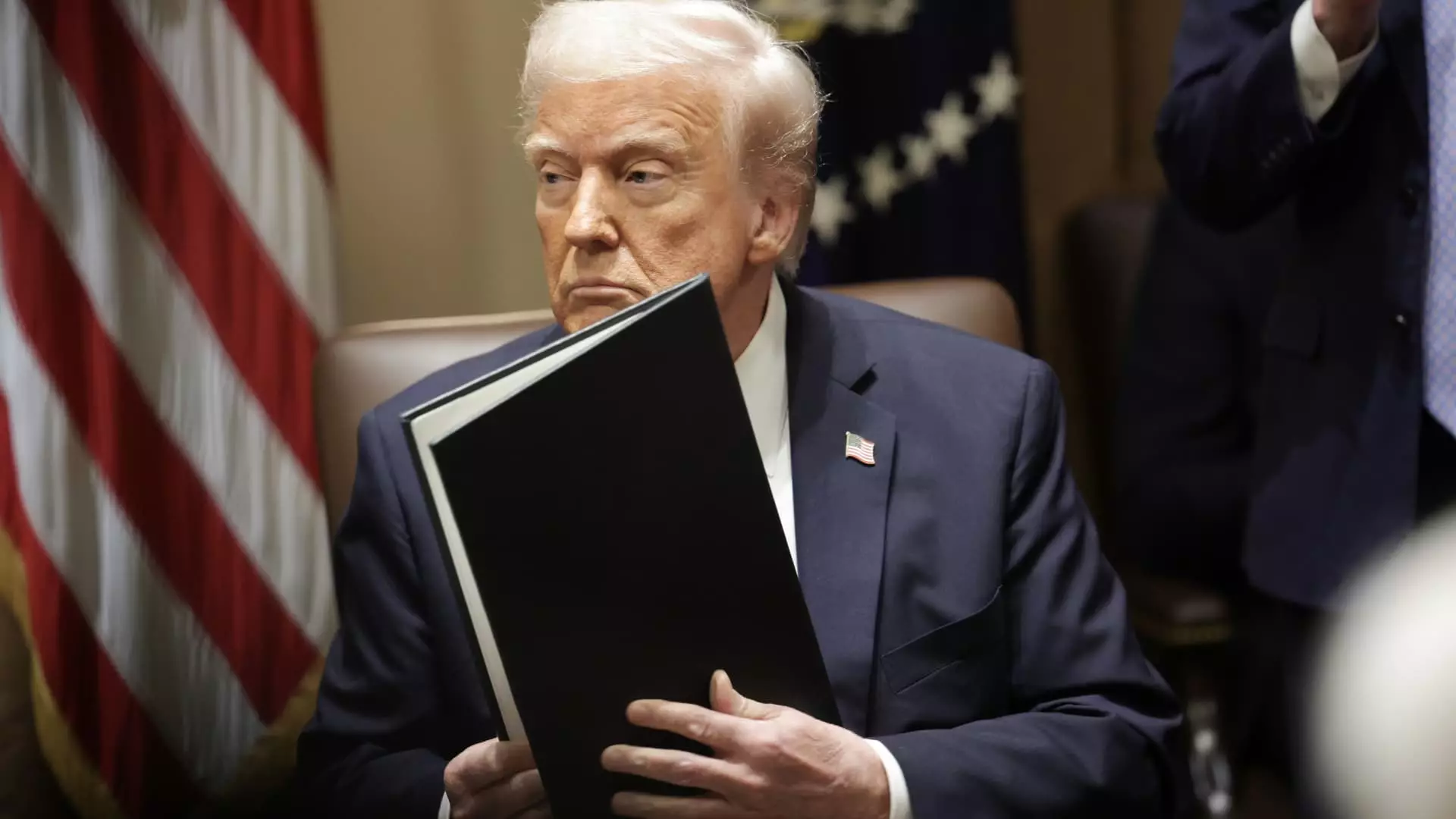The political and economic landscape in the United States is rapidly shifting, largely driven by President Donald Trump’s erratic tariff strategies. On Wednesday, Trump made headlines once again by announcing new auto import tariffs during a press conference—an event anticipated with both hope and trepidation by various sectors. Instead of providing clarity, however, this announcement has only underscored the volatile and unpredictable nature of his administration’s trade policies. There’s a distinct pattern of behavior here: announcements are often followed by market turmoil, and Trump’s tendency to oscillate on these issues leaves both consumers and businesses in a state of unrest.
The Stock Market Reacts: A Telling Indicator
Immediately after the unveiling of the new tariffs, stocks plummeted, signaling a lack of faith from investors. This isn’t merely a financial downturn; it represents a broader sentiment of anxiety that permeates through industries crucial to the economy. For businesses trying to strategize for the future, the constant flux of Trump’s policy announcements creates a precarious environment. With the looming threat of tariffs, companies may reconsider their operational decisions, choosing inaction over innovation. This cycle of uncertainty doesn’t just hurt stock valuations—it threatens the very fabric of the American economy, making it more difficult for businesses to thrive.
April 2: A ‘Liberation Day’ That Could Backfire
Trump’s rhetoric surrounding the impending “reciprocal tariff” plan paints an optimistic picture: dubbing April 2 as “liberation day” sounds empowering—except when you consider the fallout that could ensue. His original idea, to impose tariffs on all countries with their own import duties on U.S. products, could create an economic cascade effect. Such a move might provoke retaliatory tariffs from those countries, which could ultimately hurt American workers and consumers rather than protect them. Trump’s recent comments hinting at “flexibility” and potential leniency only add another layer of confusion. This set of mixed messages sends a clear signal: decision-making appears to be reactive rather than strategic.
A Balancing Act: The Investment Community’s Dilemma
Treasury Secretary Scott Bessent’s remarks about potential negotiations to circumvent tariffs bring to light an essential, if uncomfortable, truth: many nations may already be engaging in backdoor dealings to avoid falling victim to U.S. tariffs. While this might offer a temporary reprieve for certain countries, it raises questions about the integrity of U.S. trade policies. Are we truly negotiating as equals, or are we simply coercing compliance? The investment community is caught in a balancing act; the unpredictability and perceived bullying tactics may compel investors to steer clear of U.S. markets, further destabilizing growth.
Competitive Anxiety: A Global Perspective
The unilateral and unpredictable Sanction approach to trade is damaging not only for American industries but also for the global economic landscape. Allies and adversaries alike are left scratching their heads, attempting to navigate a system governed by impulsive decisions and scant rationale. This environment breeds competitive anxiety among countries reliant on stable U.S. trade relationships. For instance, smaller nations reliant on American goods and services may find themselves squeezed, ultimately leading them to strengthen ties with economic competitors such as China or the European Union.
In contemplating Trump’s tariff strategies, one must question the larger ramifications of such an administration. The mixed signals, erratic decision-making, and opaque motivations set a precarious stage for an economy that truly thrives on predictability and consistency. What will unfold as a result of these tariffs? The investment community holds its breath, while American workers and consumers brace for impact.


Leave a Reply